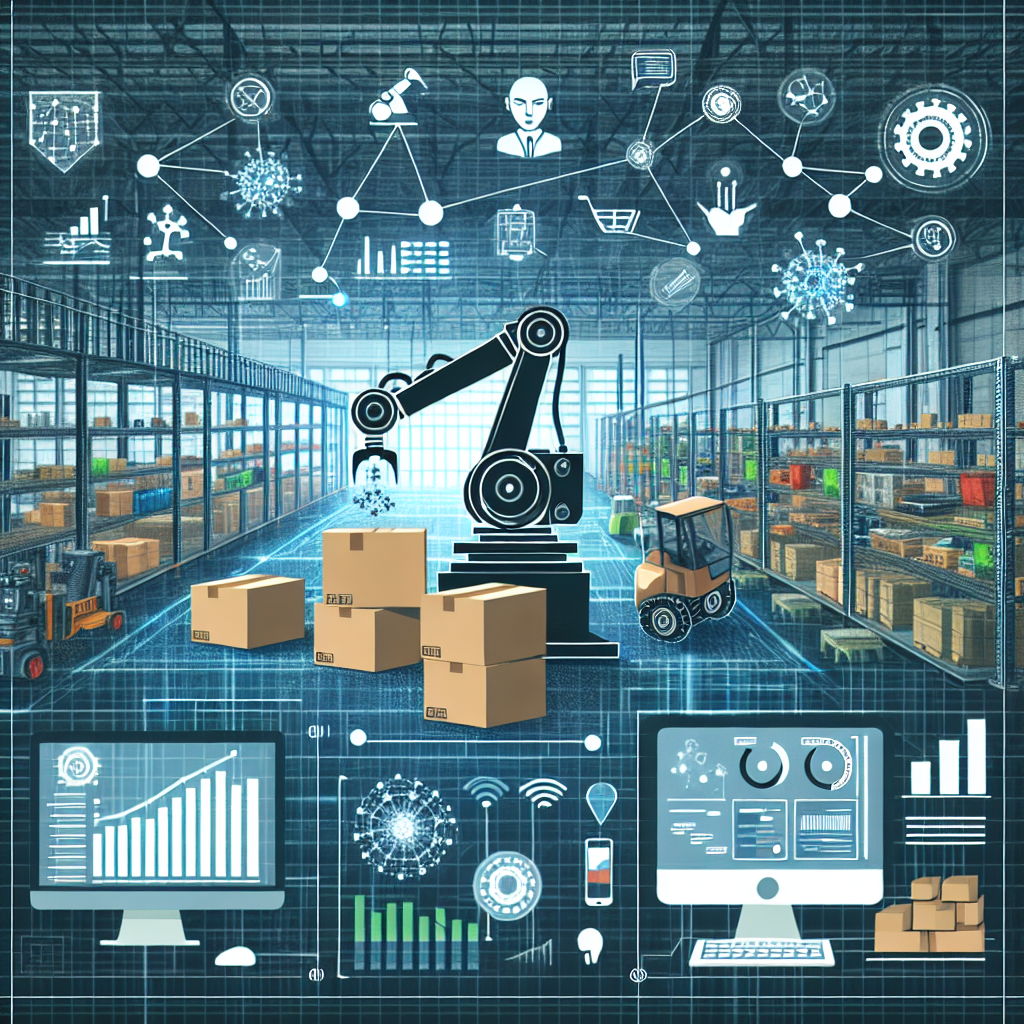Implementing AI for Inventory Management in Manufacturing
Inventory management is a critical aspect of any manufacturing operation. Ensuring that the right materials are available at the right time is essential for maintaining production schedules, minimizing waste, and controlling costs. However, traditional inventory management methods can be time-consuming, error-prone, and inefficient. This is where artificial intelligence (AI) comes in.
AI has the potential to revolutionize inventory management in manufacturing by automating many of the tasks that were previously done manually. AI-powered systems can analyze vast amounts of data in real-time, predict demand, optimize inventory levels, and even reorder materials automatically. This can result in reduced costs, improved efficiency, and better customer service.
In this article, we will explore the benefits of implementing AI for inventory management in manufacturing and provide some tips for getting started.
Benefits of Implementing AI for Inventory Management in Manufacturing
1. Improved Accuracy: AI-powered systems can analyze data with a level of accuracy that is impossible for humans to achieve. This can help to reduce errors in inventory tracking, forecasting demand, and ordering materials.
2. Real-time Data Analysis: AI can analyze large amounts of data in real-time, allowing manufacturers to make decisions quickly and respond to changes in demand or supply chain disruptions.
3. Demand Forecasting: AI can predict demand based on historical data, market trends, and other factors. This can help manufacturers to optimize inventory levels and avoid stockouts or overstock situations.
4. Optimize Inventory Levels: AI can help to optimize inventory levels by analyzing demand patterns, lead times, and other factors. This can result in reduced carrying costs and improved cash flow.
5. Automate Reordering: AI can automate the process of reordering materials when inventory levels fall below a certain threshold. This can help to reduce stockouts and ensure that production schedules are maintained.
6. Improve Customer Service: By ensuring that materials are available when needed, AI-powered inventory management systems can help to improve customer service and satisfaction.
Getting Started with AI for Inventory Management in Manufacturing
1. Define Your Goals: Before implementing AI for inventory management, it is important to define your goals and objectives. What are you hoping to achieve with AI? Are you looking to reduce costs, improve efficiency, or enhance customer service? By clearly defining your goals, you can ensure that your AI implementation is aligned with your business objectives.
2. Choose the Right AI Solution: There are many AI-powered inventory management solutions available on the market, ranging from simple forecasting tools to complex supply chain optimization systems. It is important to choose a solution that is tailored to your specific needs and budget.
3. Data Collection and Integration: AI relies on vast amounts of data to make accurate predictions and recommendations. It is important to ensure that your data is clean, accurate, and up-to-date. You may need to integrate data from multiple sources, such as ERP systems, CRM systems, and sensor data from production equipment.
4. Train Your Team: Implementing AI for inventory management will require training your team on how to use the new system effectively. This may involve providing training on data analysis, forecasting techniques, and how to interpret AI-generated recommendations.
5. Monitor and Evaluate: Once your AI-powered inventory management system is up and running, it is important to monitor its performance and evaluate its impact on your business. Are you seeing improvements in efficiency, cost savings, or customer satisfaction? If not, you may need to make adjustments or fine-tune the system.
FAQs
Q: How much does it cost to implement AI for inventory management in manufacturing?
A: The cost of implementing AI for inventory management can vary depending on the size of your operation, the complexity of the system, and the AI solution provider. It is important to carefully evaluate your budget and requirements before choosing a solution.
Q: Will AI replace human workers in inventory management?
A: While AI can automate many tasks in inventory management, it is unlikely to replace human workers entirely. Human judgment and expertise are still needed to make strategic decisions and interpret AI-generated recommendations.
Q: How long does it take to implement AI for inventory management?
A: The time it takes to implement AI for inventory management can vary depending on the complexity of the system, the amount of data to be integrated, and the readiness of your team. It is important to carefully plan and execute the implementation process to ensure a smooth transition.
Q: Can AI help with supply chain optimization in addition to inventory management?
A: Yes, AI can be used to optimize supply chain operations by analyzing data, predicting demand, and identifying bottlenecks or inefficiencies. By integrating AI into your supply chain management processes, you can achieve greater efficiency and cost savings.
In conclusion, implementing AI for inventory management in manufacturing can offer significant benefits in terms of accuracy, efficiency, and cost savings. By defining your goals, choosing the right AI solution, and training your team effectively, you can maximize the impact of AI on your inventory management processes. With careful planning and execution, AI can help to streamline operations, improve customer service, and drive business growth.

